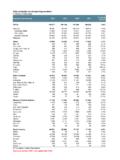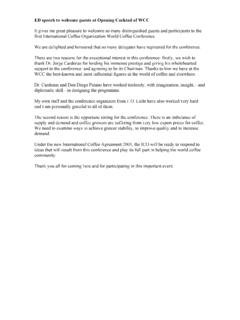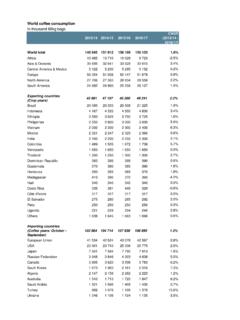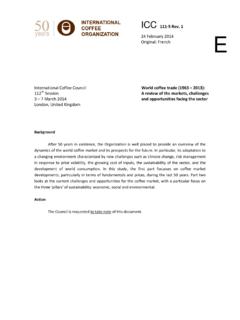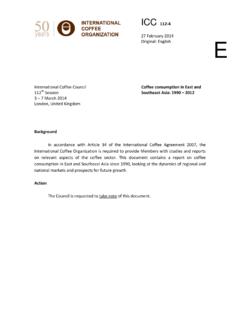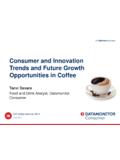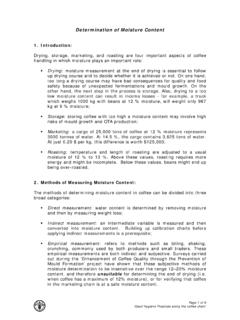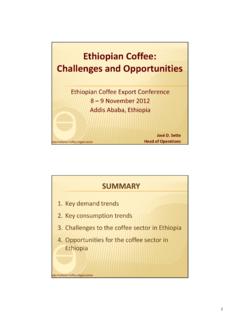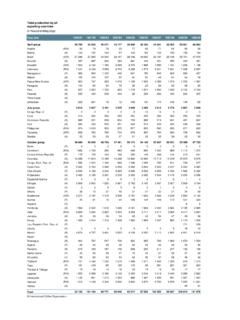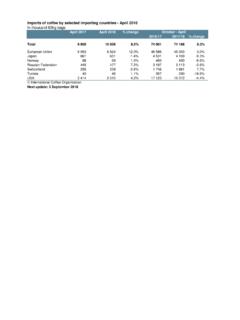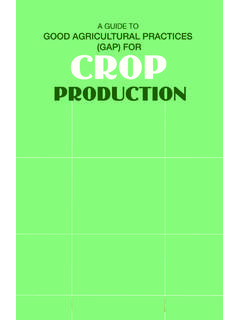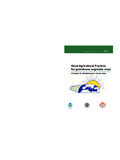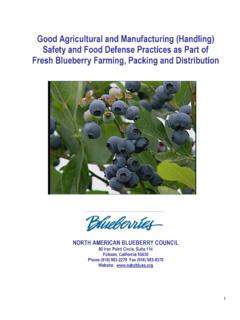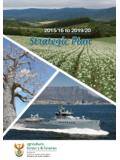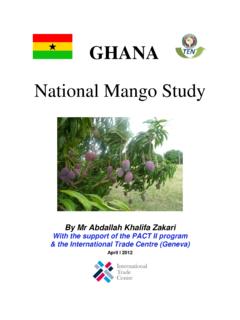Transcription of COFFEE QUALITY AND SAFETY MANUAL - What's …
1 COFFEE QUALITY AND SAFETY MANUAL _____ _____ 2004. Embrapa Informa o Tecnol gica Qualquer parte desta obra poder ser reproduzida, desde que citada a fonte. This MANUAL was developed in Brazil for the Brazilian COFFEE sector, under the National Food SAFETY Programme (PAS) NATIONAL CONFEDERATION OF INDUSTRY CNI SENAI NATIONAL COUNCIL Armando de Queiroz Monteiro Neto Diretor-Presidente SESI(Industry Social Service) NATIONAL COUNCIL Jair Antonio Meneguelli Presidente NATIONAL AGENCY FOR SANITARY SURVEILLANCE ANVISA Cl udio Maierovitch P.
2 Henriques Diretor-Presidente Ricardo Oliva Diretor de Alimentos e Toxicologia NATIONAL CONFEDERATION OF COMMERCE CNC SENAC (National Service for Commercial Learning) NATIONAL COUNCIL SESC (Commerce Social Service) NATIONAL COUNCIL Ant nio Oliveira Santos Presidente NATIONAL CONFEDERATION OF AGRICULTURE CNA SENAR (National Service for Rural Learning) NATIONAL COUNCIL Ant nio Ernesto Werna de Salvo Presidente EMBRAPA BRAZILIAN agricultural RESEARCH CORPORATION Clayton Campanhola Diretor-Presidente Mariza Marilena T.
3 Luz Barbosa Diretora-Executiva Herbert Cavalcante de Lima Diretor-Executivo Gustavo Kauark Chianca Diretor-Executivo SENAI NATIONAL DEPARTMENT Jos Manuel de Aguiar Martins Diretor Geral Regina Torres Diretora de Opera es SEBRAE NATIONAL DEPARTMENT Silvano Gianni Diretor-Presidente Luiz Carlos Barboza Diretor T cnico Paulo Tarciso Okamotto Diretor de Administra o e Finan as SESI NATIONAL DEPARTMENT Armando Queiroz Monteiro Diretor-Nacional Rui Lima do Nascimento Diretor-Superintendente Jos Treigger Diretor de Opera es SENAC NATIONAL DEPARTMENT Sidney da Silva Cunha Diretor Geral SESC NATIONAL DEPARTMENT Marom Emile Abi-Abib Diretor Geral lvaro de Mello Salmito Diretor de Programas Sociais Fernando Dysarz Gerente de Esportes e Sa de SENAR NATIONAL SERVICE FOR RURAL LEARNING Ant nio Ernesto Werna de Salvo President of the Deliberative Council Geraldo Gontijo Ribeiro Executive Secretary Tania Barretto Sim es Corr a Otniel Freitas-Silva Sara Chalfaoum Dilma Gelli Team CONTENTS PREFACE PRESENTATION 1 - INTRODUCTION 2 - PRODUCTION SYSTEMS
4 good agricultural practices (GAP) for the crop and processing of COFFEE Growing COFFEE Planning and execution of the harvest Dry pre-processing and wagging Dry processing Drying Storage Hulling COFFEE Storage Transportation 3 PRODUCTION FLUXOGRAMS Pre-harvest stages Post-harvest stages 4 HAZARDS OF THE PRODUCTION Chemical hazards Mycotoxins Pesticide residues 5 APPLICATION OF THE HACCP SYSTEM Enterprise/product characterization forms Form A Form B Form C Form D Form
5 E Hazard Analysis (Form G) Pre-harvest stages Post-harvest stages Determination of the CP/CCP (Form H) Pre-harvest stages Post-harvest stages Summary of the HACCP plan (Form I) Pre-harvest stages Post-harvest stages 6 GLOSSARY 7 ATTACHMENTS Attachment I Attachment II Attachment III PREFACE The Programme for Food SAFETY (PFS) was created on August 6, 2002, and had its origins in the HACCP (Hazard Analysis and Critical Control Points) Project initiated in April 1998 through a partnership between CNI/SENAI and SEBRAE.
6 The main purpose of the PFS is to guarantee the production of food that is safe to human health and the satisfaction of consumers, forming one of the pillars for the success of agriculture and livestock from the farm to the consumers table. Additional benefits will accrue through the generation of new jobs, services, income and other opportunities. The programme is being developed by the industry, food, transportation, distribution, special actions and countryside sectors, in articulated projects.
7 The SFP Countryside Sector was conceived through technical and financial cooperation between SENAI, SEBRAE and EMBRAPA, with the aim of instructing producers, technicians and businessman involved in primary production on the adoption of good agricultural practices (GAP), using the principles of the Hazard Analysis and Critical Control Points (HACCP), to mitigate or avoid physical, chemical and biological hazards, in order to secure consumer s food SAFETY . It focuses on food and environmental SAFETY , and specifically on advising small family producers, as well as being an integration tool with other SFP programmes.
8 The HACCP system (the Brazilian acronym is APPCC), which originated in the United States in the 1950 s, has been recognized by Brazilian government institutions such as the Ministry for Agriculture and Food Supply, Ministry of Health and Ministry of Science and Technology, as a tool to help meet Brazilian legislative requirements. At the international level, HACCP is recommended by the Food and Agriculture Organization of the United Nations (FAO), the World Health Organization (WHO), the World Commerce Organization and Codex Alimentarius.
9 This recognition and synthesis of efforts between the Programme and Systems ensure the production of QUALITY agricultural products for the internal market, besides allowing an increased competitiveness at the international market. This publication is part of a collection of documents that are aimed at producers, technicians, rural businessmen and others interested in the use of GAP in the consistent application of management systems for the adequate control of food risks and hazards.
10 PRESENTATION Brazilian agriculture and livestock have experienced major advances in recent years, especially with regard to productivity. However, primary production has presented various limitations regarding the control of physical, chemical and biological hazards. This is mainly because of the gret care required during both pre- and post-harvest procedures, in order to avoid hazards that might lead to diseases transmitted by At the international level, and in the context of global markets and a global economy, there has been an increased demand by consumers for safer foods and environmental sustainability.
